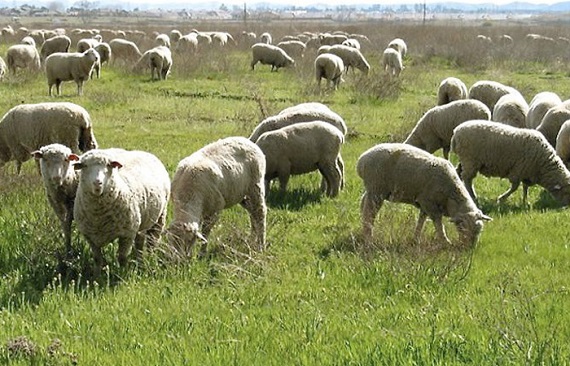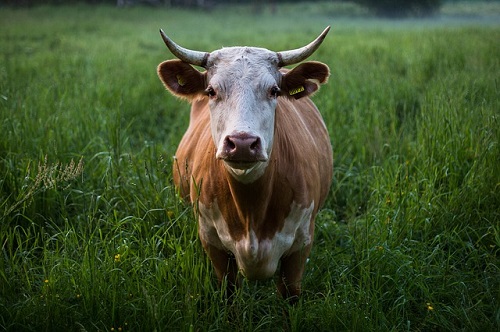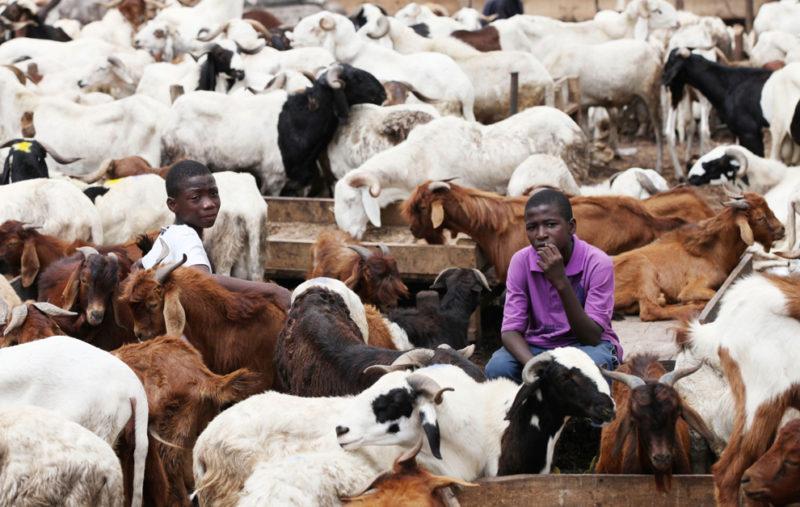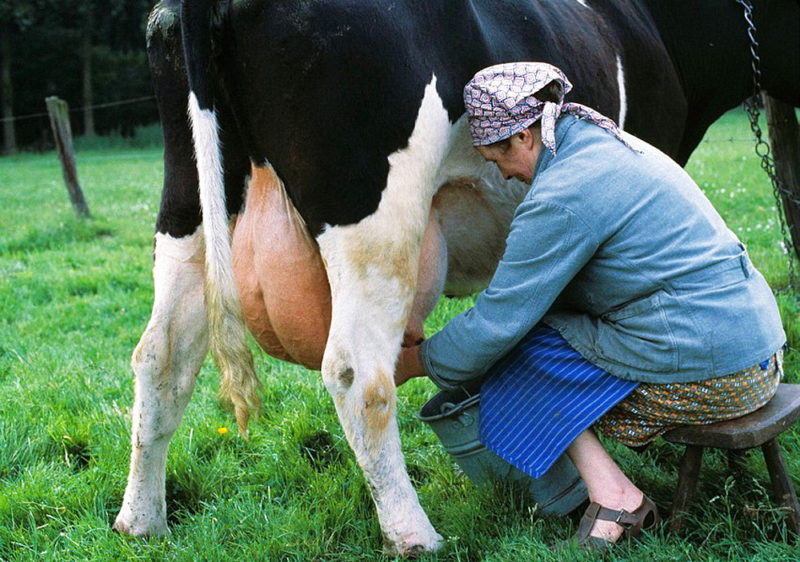Sheep farming has been in existence for centuries and sheep are used by humans to supply food and clothing, and they are also great at controlling weeds. They even make good pets!
Sheep make up about 1% of livestock in the United States. Most of these are owned by big sheep operations, and it can be tough to turn sheep farming into a very profitable enterprise unless you have a large flock and an excellent local market.
Sheep can be great to have on hand for personal use though, giving you a supply of wool, meat, milk (great for making cheese) as well as helping to eliminate weeds. Their manure makes a fantastic fertilizer as well, better than horses or cattle.
If you’re thinking about getting sheep, these are the things you must consider.
Choosing the Right Sheep
Your first decision is what type of sheep to buy. This depends on what your primary use for them is.
- If it is for wool, you want a breed like Merino or Rambouillet.
- If it is for meat, you want a breed like North County Cheviot, Southdown, Dorset, Hampshire, Suffolk or Texel.
- If it is for milk, you want a breed like East Friesian or Lacaune (most of the sheep milk produced in the world is used to make cheese. Many famous kinds of cheese, such as feta and Ricotta, use sheep’s milk).
- If you are looking for dual-purpose sheep that can do more than one thing well:
- If it is for wool and meat, you want a breed like Columbia, Corriedale, Polypay or Targee.
Some European breeds are good at producing wool, meat and milk.
If it is for pets, you want to choose a smaller breed, and either a female or neutered male (to avoid horns). They should be bought as lambs and bottle-fed, to create trust with humans.
Make sure you order your sheep from a certified breeder, so you can be confident that you are receiving what you have paid for.
If you want sheep for mating (with each other, of course!), you’ll need one ram (male sheep) for every 30-50 ewe (female).
Housing and Protecting Sheep
Shelter
Sheep are pretty hardy and can spend most of their time outdoors unless the weather is particularly bad. Still, you should have some shelter for them, especially for when they are giving birth (known as lambing).
You want your shelter to be in an elevated area that drains well, to avoid water pooling. It can be something simple, such as an old barn or hoop house (a metal frame covered in fabric). You want your structure to have at least 3 sides, to avoid drafts, and ideally, the open side should face south, away from the prevailing wind.
You want your shelter to be very well ventilated to avoid respiratory issues with your sheep. Adding bedding such as hay or newspaper will help keep the ground warm and your sheep cleaner.
When confined to a building, a ewe will need 12 to 16 square feet of living space. A lambing pen should have 15 to 25 square feet of space per ewe.
You will also need land where your sheep can graze. How much land you need will vary wildly depending on your species of sheep and the quality of the pasture. A very rough rule of thumb is that you will need 1 acre for every 5 ewes.
Fencing
No, this isn’t the section where we talk about sword fights. This is about how to fence off the property your sheep will be grazing on. The reason for this is twofold- to keep predators out, and to keep sheep in their specified grazing area.
First, you will need a perimeter fence. This surrounds the grazing area, is intended to be there for a long period of time, and is primarily there to keep predators out. Sheep have many natural predators, with foxes, coyotes and dogs being the greatest threat. Multi-strand, high-tensile electric fences with barb wires at the top and bottom are ideal for making it as difficult as possible for predators to get in.
Second, you may want interior fences as well to create separate areas (paddocks) for grazing. This may be done to keep sheep off of land that has been overgrazed, to keep lambs away from their mothers, or to keeps rams away from ewes or smaller rams.
Dogs
Dogs have been used by shepherds for pretty much all of recorded history to herd their sheep and keep them safe. There are 2 types of dogs used: herd dogs and guard dogs.
Herd dogs must be dominant, have good relationships with the shepherd and follow orders well. Their job is to keep the sheep in the right area and to move them when needed. Some common breeds are Border Collie, Australian Shepherd, Australian Kelpie and Australian Cattle Dog.
Guard dogs are larger and more imposing, and ironically need to be more submissive. It is their job is to scare off any potential predators. They are not to be treated as pets and should be brought up with the sheep to create a bond between them. Some common breeds are Great Pyrenees, Akbash and Anatolian Shepherd, Komondor and Kuvasz and Maremma.
Feeding Sheep
Sheep are ruminant animals (have 4 stomach chambers) and will regularly regurgitate and re-chew the food they eat. This regurgitated food is called cud, and the process is as nasty as it sounds.
Grazing
Sheep are fairly easy to feed. They get most of their food from grazing, so as long as you have enough land covered in grass, clovers and forbs (broadleaf plants, sheep love these) the sheep will basically feed themselves.
Sheep will graze around 7 hours a day, mostly around dawn and dusk. They will overgraze if allowed to, so you must be careful not to let them feed on a pasture for too long.
Moderate grazing has shown to actually be good for the land, reducing weeds, helping trees grow better and increasing biodiversity. Having sheep limit vegetation growth around urban areas has even been shown to help stop the spread of wildfires.
Supplements
Sheep can also be fed food processing by-products, such as hulls, corn gluten feed or wheat middlings. If forage isn’t available you can use stored feed such as hay. A sheep’s diet can also be supplemented with pellet feed and salt licks. Sheep love the taste of grain, but should only be given a moderate amount to avoid stomach problems.
It’s a good idea to have feeding troughs and watering devices for your sheep.
Health
One must be cautious when dealing with sheep, as they can contract diseases from them. Diarrhea, sore mouth and ringworm can all pass from sheep to humans. Pregnant women must be particularly cautious, as some of the organisms that cause miscarriage in sheep can spread to humans as well.
You will need to keep them wormed regularly and keep them protected against pests, fly-blown disease and foot-and-mouth disease.
Mating and Birthing
In moderate climate areas, sheep tend to mate in the fall, so their lambs can be born in the spring when it is warm and the grass is plentiful.
Ewes born in the spring will often reach sexual maturity by that fall if growing conditions are good. Sometimes they won’t be ready until the following year. Upon reaching maturity they will be fertile every 2-3 weeks, for a 24-36 hour period. Only during this period will a ewe mate. During this time she will seek out a ram, nuzzling him and fanning her tail.
A ram will reach sexual maturity around 7 months and will be ready to breed. You want to keep young rams separate from the older rams that have more developed horns and may hurt them.
Ewes are pregnant for around 5 months. The majority of growth will occur in the last month, so they will need a lot of extra food. This is a good time to supplement.
During the last month of pregnancy, ewes should be de-wormed and vaccinated against clostridia diseases.
Ewes will give birth to 1-3 lambs, usually just one in the first few years and more in later years. A small to medium-sized lamb will usually weigh between 5-10 pounds.
Wool, Milk and Meat: How to Shear, Milk And Slaughter Sheep
Shearing
If you want to collect sheep’s wool, they need to be sheared. This can be done using electric shearing machines, or done the old-fashioned way, with scissors or a hand blade. A professional shearer can do this very quickly, sometimes in even a minute or less:
Shearing is usually done in the spring, just before the warm weather arrives. It takes around 6 weeks for the fleece to regrow enough to provide insulation, so in this time your sheep may require shelter to stay warm.
High-quality fleece needs to be “skirted”- this means removing the undesirable parts of the fleece, such as bellies, top knots and tags.
Milking
If collecting milk is your goal, you must become proficient at milking your sheep. Here is a guide to doing just that. Click Here
Slaughtering
And lastly, if your goal is to raise your sheep for meat, this is a guide to slaughtering them: Click Here



